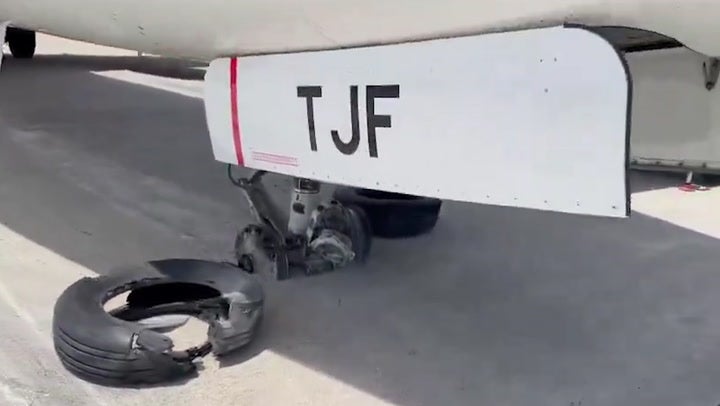Boeing 737 forced to make emergency landing minutes after take-off
Boeing says they are ‘fully confident in the safety and durability’ of their planes despite a series of mishaps this week
Your support helps us to tell the story
From reproductive rights to climate change to Big Tech, The Independent is on the ground when the story is developing. Whether it's investigating the financials of Elon Musk's pro-Trump PAC or producing our latest documentary, 'The A Word', which shines a light on the American women fighting for reproductive rights, we know how important it is to parse out the facts from the messaging.
At such a critical moment in US history, we need reporters on the ground. Your donation allows us to keep sending journalists to speak to both sides of the story.
The Independent is trusted by Americans across the entire political spectrum. And unlike many other quality news outlets, we choose not to lock Americans out of our reporting and analysis with paywalls. We believe quality journalism should be available to everyone, paid for by those who can afford it.
Your support makes all the difference.A Boeing 737 passenger plane was forced to make an emergency landing just minutes after taking off.
It is the fourth incident to plague the aircraft maker in three days as potential passengers wrestle with the idea of whether to fly in these models.
Flight 166, a 737 jet operated by United Airlines, took off from Fukuoka Airport in south-western Japan on Friday morning, heading for Guam, an island territory in the western Pacific.
The flight was due to last just under four hours but the passenger plane, carrying 50 holidaymakers, was forced to land back at Fukuoka Airport shortly after taking off.
The plane landed back on the tarmac at Fukuoka around 11.45am local time (3.45am UK time) due to a wing flap that was found to be malfunctioning.
No injuries were reported, but it is the latest in a series of incidents involving Boeing planes that appear to be undermining consumer faith in the models.
On Thursday, 190 people were evacuated from a Boeing 737-800 after its tyres burst when it came into land at Gazipasa airport near the Mediterranean coastal town of Alanya.

The aircraft, belonging to Turkey-based Corendon Airlines, was pictured on Friday with its front wheels and landing gear crumpled underneath.
The incident happened just hours after a Boeing 737-300 skidded off the runway and caught fire during a take-off in Senegal.
Footage showed terrified passengers fleeing the burning plane, which had been carrying 78 people.
And on Wednesday, a Boeing 767 cargo plane was forced to make an emergency landing at Istanbul Airport after its front landing gear failed.
Footage showed the nose of the aircraft sliding across the runway, sending sparks and smoke into the air.

There is no proof that Boeing is responsible for these incidents, but they have compounded problems the company is already facing concerning safety.
The US’s Federal Aviation Administration (FAA) said at the start of the week it had opened an investigation into the company after workers at a South Carolina plant falsified inspection records on certain 787 planes.
Current CEO Dave Calhoun announced in March he would be stepping down at the end of this year in a management overhaul, with share prices plunging.
In a statement on 787 quality, Boeing said: “In 13 years of service, the global 787 fleet has safely transported more than 850 million passengers on more than 4.2 million flights.
“A 787 can safely operate for at least 30 years before needing expanded airframe maintenance routines. Extensive and rigorous testing of the fuselage and heavy maintenance checks of nearly 700 in-service airplanes have found zero evidence of airframe fatigue.
“Under FAA oversight, we have painstakingly inspected and reworked airplanes and improved production quality to meet exacting standards. We are fully confident in the safety and durability of the 787 Dreamliner.”

Join our commenting forum
Join thought-provoking conversations, follow other Independent readers and see their replies
Comments